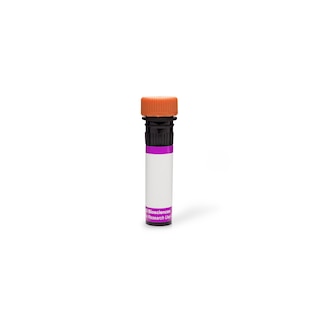-
Your selected country is
Middle East / Africa
- Change country/language
Old Browser
This page has been recently translated and is available in French now.
Looks like you're visiting us from {countryName}.
Would you like to stay on the current country site or be switched to your country?


Regulatory Status Legend
Any use of products other than the permitted use without the express written authorization of Becton, Dickinson and Company is strictly prohibited.
Preparation And Storage
Recommended Assay Procedures
For optimal and reproducible results, BD Horizon Brilliant Stain Buffer should be used anytime two or more BD Horizon Brilliant dyes (including BD OptiBuild Brilliant reagents) are used in the same experiment. Fluorescent dye interactions may cause staining artifacts which may affect data interpretation. The BD Horizon Brilliant Stain Buffer was designed to minimize these interactions. More information can be found in the Technical Data Sheet of the BD Horizon Brilliant Stain Buffer (Cat. No. 563794).
Product Notices
- This antibody was developed for use in flow cytometry.
- The production process underwent stringent testing and validation to assure that it generates a high-quality conjugate with consistent performance and specific binding activity. However, verification testing has not been performed on all conjugate lots.
- Researchers should determine the optimal concentration of this reagent for their individual applications.
- An isotype control should be used at the same concentration as the antibody of interest.
- Caution: Sodium azide yields highly toxic hydrazoic acid under acidic conditions. Dilute azide compounds in running water before discarding to avoid accumulation of potentially explosive deposits in plumbing.
- For fluorochrome spectra and suitable instrument settings, please refer to our Multicolor Flow Cytometry web page at www.bdbiosciences.com/colors.
- Please refer to www.bdbiosciences.com/us/s/resources for technical protocols.
- BD Horizon Brilliant Stain Buffer is covered by one or more of the following US patents: 8,110,673; 8,158,444; 8,575,303; 8,354,239.
- BD Horizon Brilliant Violet 605 is covered by one or more of the following US patents: 8,110,673; 8,158,444; 8,227,187; 8,455,613; 8,575,303; 8,354,239.
Companion Products






The 108928 monoclonal antibody specifically recognizes the Mer tyrosine kinase (Mer or MerTK). Mer is a single-pass type I transmembrane glycoprotein that is encoded by Mertk (c-mer proto-oncogene tyrosine kinase) and is also known as Eyk, Nyk, Tyro 12, or Nmf12. Mer is comprised of an extracellular region with two immunoglobulin (Ig)-like domains and two fibronectin type III (FNIII) domains, a transmembrane segment and a conserved intracellular tyrosine kinase domain. Tyro-3, Axl, and Mer constitute the TAM subfamily of receptor tyrosine kinases (RTK). Mer is variably expressed by multiple cell types including monocytes, macrophages, dendritic cells, NK cells, platelets, and epithelial cells including retinal pigment epithelial cells. Mer binds to the vitamin K-dependent Growth arrest-specific protein 6 (Gas6) and to Protein S (ProS) through its extracellular Ig-like domains. Ligand binding leads to receptor dimerization, and autophosphorylation of tyrosine residues within the cytoplasmic Mer domains. This results in the activation of downstream signaling pathways that control cellular adhesion, aggregation, phagocytosis/efferocytosis, proliferation, survival, and migration. Through these activities, Mer plays major roles involved in development and in the regulation of hematopoiesis and immunity. Abnormal expression of Mer has been observed in various cancers and by certain tumor cell lines.
This antibody is conjugated to BD Horizon™ BV605 which is part of the BD Horizon Brilliant™ Violet family of dyes. With an Ex Max of 407-nm and Em Max of 602-nm, BD Horizon BV605 can be excited by a violet laser and detected with a standard 610/20-nm filter set. BD Horizon BV605 is a tandem fluorochrome of BD Horizon BV421 and an acceptor dye with an Em max at 605-nm. Due to the excitation of the acceptor dye by the green (532 nm) and yellow-green (561 nm) lasers, there will be significant spillover into the PE and BD Horizon PE-CF594 detectors off the green or yellow-green lasers. BD Horizon BV605 conjugates are very bright, often exhibiting brightness equivalent to PE conjugates and can be used as a third color off of the violet laser.

Development References (6)
-
Caraux A, Lu Q, Fernandez N, et al. Natural killer cell differentiation driven by Tyro3 receptor tyrosine kinases.. Nat Immunol. 2006; 7(7):747-54. (Biology). View Reference
-
Cnops J, De Trez C, Stijlemans B, et al. NK-, NKT- and CD8-Derived IFNγ Drives Myeloid Cell Activation and Erythrophagocytosis, Resulting in Trypanosomosis-Associated Acute Anemia.. PLoS Pathog. 2015; 11(6):e1004964. (Clone-specific: Flow cytometry). View Reference
-
Gould WR, Baxi SM, Schroeder R, et al. Gas6 receptors Axl, Sky and Mer enhance platelet activation and regulate thrombotic responses.. J Thromb Haemost. 2005; 3(4):733-41. (Clone-specific: Flow cytometry). View Reference
-
Lemke G, Rothlin CV. Immunobiology of the TAM receptors. Nat Rev Immunol. 2008; 8(5):327-336. (Biology). View Reference
-
Paolino M, Choidas A, Wallner S, et al. The E3 ligase Cbl-b and TAM receptors regulate cancer metastasis via natural killer cells.. Nature. 2014; 507(7493):508-12. (Clone-specific: Flow cytometry). View Reference
-
Taichman RS, Patel LR, Bedenis R, et al. GAS6 receptor status is associated with dormancy and bone metastatic tumor formation.. PLoS ONE. 2013; 8(4):e61873. (Clone-specific: Flow cytometry). View Reference
Please refer to Support Documents for Quality Certificates
Global - Refer to manufacturer's instructions for use and related User Manuals and Technical data sheets before using this products as described
Comparisons, where applicable, are made against older BD Technology, manual methods or are general performance claims. Comparisons are not made against non-BD technologies, unless otherwise noted.
For Research Use Only. Not for use in diagnostic or therapeutic procedures.
Report a Site Issue
This form is intended to help us improve our website experience. For other support, please visit our Contact Us page.